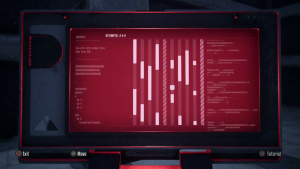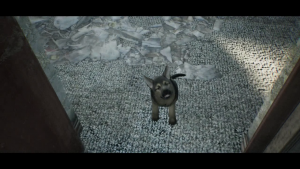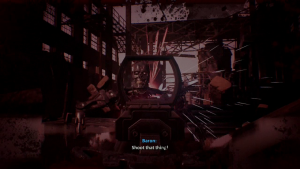Considering the quality of developer Teyon’s first big licensed product “Rambo: The Video Game” – a poorly designed arcade style rail shooter released on seventh generation consoles & PC – it’s hard to describe how disappointing it was for fans of the “Terminator” franchise to discover the video game license had found its way into Teyon’s hands. Quietly announced in September 2019 and released on the eastern hemisphere two months later, it would take another month before western gamers had a chance to try Teyon’s “Terminator: Resistance”; with another month passing before the disc version released. Thanks to the major video game release lull, I took the chance to see if Teyon learned from their mistakes with “Rambo” or produced, yet again, one of the worst games to close out a generation.
Did I Complete “Terminator: Resistance”?
Set over thirty years after the events of “Judgment Day” – a time emphasized in the first two “Terminator” movies where AI defense network Skynet became self-aware and annihilated humanity with a nuclear attack – players take control of Resistance survivor Jacob Rivers in his attempt to put Skynet down. After Jacob’s mission results in his unit being slaughtered and him stranded, the player is moved into various locales alongside other surviving fighters in hopes of reuniting with Resistance leader John Connor and ending Skynet for good. “Resistance” utilizes not only prototypical first-person shooting during the action sequences including a weapon wheel to switch guns mid-battle, but also side quests to investigate areas in hopes of attaining that special trinket or even a puppy for a kid struggling with the catastrophe that is his life. The game features a trophy/achievement list that is both not too difficult and slightly relies on the player exploring certain environments thoroughly. After twelve hours, the Resistance made a major stand against Skynet with the decisions of yours truly playing out in shocking form as the platinum trophy popped.
Did “Terminator: Resistance” Live Up to the Hype?
As per the norm in regards to the genre, “Terminator: Resistance” places Jacob Rivers in several combative situations featuring a mix of assault rifles, shotguns, melee attacks, and, about three hours in, plasma weapons that are able to take down the various T-800 enemies that shockingly become cannon fodder. There’s nothing revolutionary about “Resistance’s” gameplay mechanics including the stereotypical ability to run & gun, landing critical head & weak point shots to extinguish an enemy’s health bar, and a mostly beneficial stealth system extenuated by the “Terminator Knife” craftable weapon that allows for Rivers to put down a T-800 in one fell swoop. “Resistance” also features a “Detective Mode” where putting on a pair of UV goggles (in the PS4’s case by tapping the right analog stick) allows for Rivers to see every nearby enemy. A majority of the time the usage of Jacob’s goggles makes things too easy and would’ve been a nice subtraction to make the harder difficulties more compelling.
The action sequences and overall gunplay is definitely “Resistance’s” strongest attribute feeling tight & rewarding even if the AI isn’t the most intelligent or dangerous; missing easy shots and only doing significant damage against the protagonist at higher difficulty levels. The most interesting gameplay implementation is the hacking system. Unlike the stereotypical lock pick system adopted from games like “Fallout 3”, “Resistance’s” hacking presents a “Frogger” inspired mini-game that can be challenging when figuratively tackling “Medium” or “Hard” labeled objects. Upon successfully hacking either by completing the mini-game or by using “Force” while sacrificing one of the dozens of chips available for plasma weapon upgrades found on both fallen enemies and at the various “Trade” stations, Rivers can unlock certain doors, crates and even take control of turrets that can rip enemies to shreds in no time.
There is an upgrade system for both Jacob’s weapons and Rivers himself. With each successful kill and mission, Rivers gains experience points with enough leveling Jacob while providing a skill point. Skill points can be used to purchase personal upgrades such as increasing inventory size, making it harder for Rivers to be detected, and being able to craft more advanced items like the aforementioned “Terminator Knife”. Some upgrades are locked until the player advances the story such as the “Weapons” branch, but others like the “Hacking” portion can all be purchased at one time as long as the player has enough points. There are also collectibles in the game including skill point books that, when found, gives the player an extra point as a reward.
Weapon upgrading utilizes a circuit system sporting various shapes connected via chips including three rectangular lines or a single square. Boosting damage, stability & even the clip size just makes those impressive plasma weapons that much more enjoyable to use. There are other various items & weapons to find & craft like stimulants to temporarily reduce damage and laser trip mines respectively, but due to the AI’s rudimentary nature (and there usually being an explosive barrel just waiting to wipe out any nearby enemy set) a majority of the time all the player needs are some pipe bombs, a health kit and whatever plasma weapon is available.
Narratively, “Resistance” is also solid with some nice cinematic sequences to offset the stilted, “Fallout 3”-esque dialogue presentation featuring conversation choices if the player decides to talk more with an NPC. Throughout the various “chapters” certain NPCs will ask Jacob to complete a side mission that usually results in a fetch quest. Completing these side missions not only gives Rivers experience points, but also adds a level of trust between Jacob and the quest giver that players a major role in the game’s final story missions – a sequence of harrowing events that definitely ends the game on a high note. Like the side quests, the main story missions aren’t memorable or unique with the most out of the ordinary either featuring a group of Resistance fighters working alongside Rivers or sneaking around an area to take pictures of certain Skynet objects of destruction.
“Resistance” is shockingly technically sound. While the graphics are either incredibly crisp or sport terrible resolution, the atmosphere & music are incredible. The actual themes & songs used in the first two “Terminator” movies are given a grand showcase in “Resistance” and it makes those early hours when everything is still shrouded in mystery wonderful. The game suffered from very few frame rate drops and graphical glitches with the latter being a T-800 refusing to fall down when dead. The game never crashed or featured any broken missions; making a more enjoyable experience than some bigger AAA titles in the same genre. “Terminator: Resistance” is as elementary & bare-bones as one can get and it’s actually better for it; not being bogged down by unnecessary online additions or technical issues. “Resistance” doesn’t ask much from the player; just providing a simple FPS to give someone ten to fifteen hours of fun depending on the difficulty level before allowing said gamer to move on to their next digital adventure.
Should You Play “Terminator: Resistance”?
“Resistance” is the perfect budget title that one picks up for a weekend or two of fun. The gameplay is solid, but not revolutionary or memorable. The story is fine with a final hour or two being the most harrowing. The soundtrack & general atmosphere is incredible especially during missions occurring at nighttime. “Resistance” is also technically polished and doesn’t sport bugs & glitches to make the game unplayable. Even though it doesn’t do much to shock the world, fans of first-person shooters and “Terminator” movie lovers alike will enjoy the ride without the need to go back in time and experience what it’s like to have a soulless killer robot crawling in your direction during an escape gone wrong.








